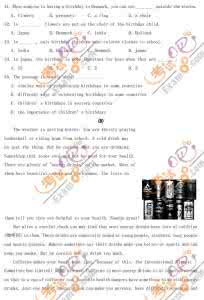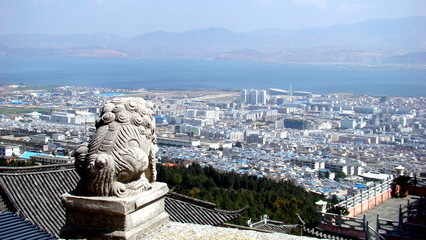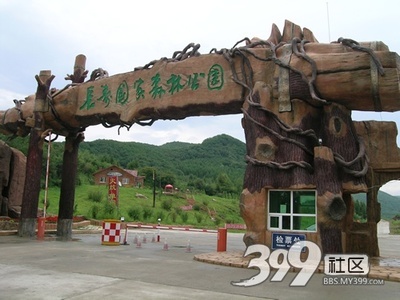Jingzhou, with a history of more than 2,600 years, is the cradle of Chu Culture and one of primary places of Three Kingdoms culture. Jingzhou was the native place of Qu Yuan, the great patriotic poet in China and a town of military
importance in the periods of dozens of kingdoms and dynasties. To the east of Jingzhou is Wuhan , a hub city of traffic; to the west is the world-known project of Three Gorges; to the south is the vast lake of Dong Ting ; to the north is the imposing beautiful mountain of Wu Dang . Having peaceful, picturesque
campuses dotted with relaxing and scenic spaces, the city is really a good place to visit.
The Ancient City of Jingzhou
Jingzhou lays in the south of the centre of Hubei Province and the middle reaches of the Yangtze River, and is an ancient cultural city with a long history of more than two thousand years. It was originally one of the birth places of the culture of Chu State in the Spring and Autumn Period (770 BC-476 BC) and Warring State Period (476 BC-220 BC), which left extremely valuable cultural relics from their 400 plus years' reign equally comparable with the ancient Greek and Roman culture. In the Three Kingdom Period (220-589), the city was the focus of many disputes and wars. Since the Eastern Jin Dynasty (317-420), the city had been established as the capital by 11 emperors in all, making it the political centre in China for more than 100 years. As Jingzhou City represents so much importance in Chinese history the city has been acknowledged by the State Department in China to be one of the best of 24 famous historical and cultural ancient cities. Its cultural relics and advantageous location has drawn the attention of many tourists' from both home and abroad.
The City Wall and the City Gate Tower
Jingzhou divides into three parts from outside to inside - Water City, Brick City and Earth City originally mainly designed for the military function. The moat outside is the first line of protection for the city. There are two city gates as you enter the city, and the space between is called 'Urn City', which was used to catch the enemy inside.
The brick City that can be seen by us now was rebuilt during the Ming Dynasty (1368-1644) and Qing Dynasty (1644-1911). It is one of the most
complete and solidest constructions that remain. The wall was mainly built with bricks and stripped stones at the bottom, the gaps between the bricks were filled with a sticky rice substance that hardened with time and provided a
substancially firm substitute to the cement that we are now so familiar with.
There were 6 ancient city gates in the wall, originally each had a tower. Now
the most popular are the Binyang Lou on the Eastern Gate, the Qujiang Lou on the Southern Gate, and Chaozong Lou on the Large Northern Gate. Eastern Gate was for welcoming the guests and ambassadors in ancient times, so the tower is very grandiose and the Urn City is also the biggest. On the Qujiang Lou, all the splendor of the Yangtze River comes into view. The Large North Gate was the fortress leading to Beijing and the central area, and people used to see their friends off from here and broke a willow branch to send their greetings, hence the gate was also called 'Willow Gate'. Climbing onto the towers, you gain a magnificent panoramic view of this beautiful city.
The Jingzhou Museum
A local comprehensive museum that is well-known for its excellent environment, rich stores and great archeologist achievements. Cooperating with other
engineering projects, the museum has excavated over 120 thousand valuable cultural relics. These include ancient jade plates, silks, spears, swords, lacquers, and bamboo books that record the earliest mathematical works as well as the earliest and most complete man corpus that remains. All of these precious and rare relics attract tourists from near and afar, making the museum one of the 'First Windows' to see the history of Jingzhou.
Relics of Three Kingdoms
The Three Kingdoms Period played an important part in Chinese history, when many great heroes were born and the famous military strategy '36 Tricks' were used perfectly. One of the four Chinese ancient classic works, Romance of the Three Kingdoms by Lo Kuan-Chung, was created just based on this period of history. Jingzhou, as the focus of quarrels then, has left many cultural relics that are related to the stories of Three Kingdoms. For example, Guandi Miao is a temple for the memorial of Guanyu, a general defending Jingzhou for one of the three kingdoms - Shu. Many legends and myths were also produced in this spiritual city.
Here is a legend where the 'Jiunv Zhuo' (Nine Girls Mound) beside the city gate originates from. It was said that when Guan Yu guarded the city, he met nine fairies flying down to the earth, who said that they were commanded by the Empress of Heaven to take the city back because there were too many quarrels. Not willing to lose the city, Guan thought hard and then an idea occurred to him. He suggested the fairies compete to build a city from the dark to the crowing in the next morning and the winner could manage the city. The fairies agreed. Then
they began to build the city with the earth brought by their skirts while Guan used the reeds. Guan quickly finished first but the time was not up. Then Guan shook the reed roosts of the roosters, which made them crow. So the fairies had to fly up to heaven shyly. It was also said Zhang Fei, the sworn little brother of Guan, also came to help but was late, so he dropped the earth outside the gate, hence the Mound is also called 'Zhang Fei's load of Earth'.

Other Cultural Relics
There are also many other ancient towers and temples in the city. The most famous ones are the Wanshou Baota (the Longevity Pagoda), Kaiyuan Guan,
Taihui Guan, Xuanmiao Guan and two temples - Tienv Si and Zhanghua Si. Also in Jinan Town, 5. km. (3.11 miles) away from the Small Northern Gate of Jingzhou, lies the capital of Chu State-Jinan Ancient City. And in the Balingshan National Forest Park, 20 km. (12.43 miles) northwest of Jingzhou, you can find the Balingshan Tumulus Group. Almost all of these relics have been listed as the Cultural Relics of National Importance under the Protection of the State.
Travel Tips
The transportation here is very convenient. It is 179 km. (111.23 miles) away from Wuhan City and connected to it by the highway. Railways lead across the country. You can also travel by water to Shashi Port or to Shashi Airport by plane. There is 'Jingzhou International Dragon Boat Festival' in the first week of May, for the memorial of Qu Yuan, a famous patriot of Chu State who jumped into the Miluo River, so there will come many travellers in Jingzhou at this time.
百度搜索“爱华网”,专业资料,生活学习,尽在爱华网
 爱华网
爱华网


